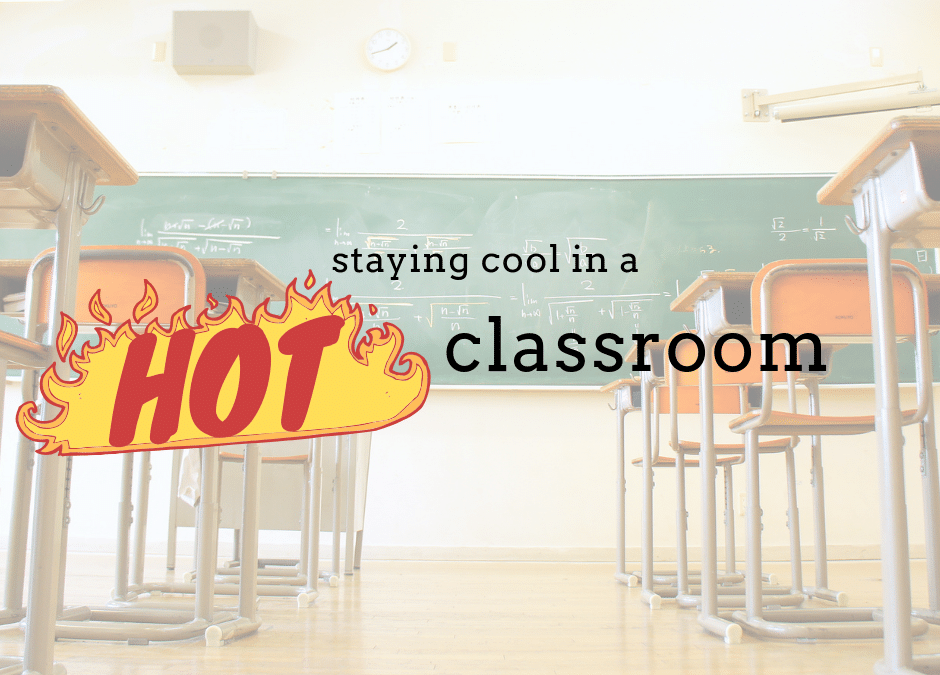As students and educators head back to school, an uninvited visitor is joining them: summer heat. Much of the country is experiencing a late summer heatwave, sending temperatures to possible record highs. Teaching students in hot, uncomfortable classrooms is difficult, and many schools don’t have adequate air conditioning.
Here are some ways to help keep everyone cool in the classroom:
- Minimize using overhead lights (instead, turn off the lights and use lamps or Christmas lights)
- Close shades to block intense sunlight
- Take cool-down breaks between lessons
- Avoid excess movement during the hottest part of the day
- Utilize a climate-controlled computer lab
- Switch off unused electronics that produce heat even in standby mode
- Invest in fans to cool the room
It’s also important for you and your students to stay hydrated. The Centers for Disease Control and Environment advises avoiding sugary and calorie-laden sports and soft drinks when the temperature rises. Water is the best way to hydrate the body, and it helps with cooling. Make sure your students always have easy access to water.
The American Academy of Pediatrics also warns against students engaging in physical exercise in extreme heat because they can overheat quicker than adults. However, if your students engage in physical activity, it is crucial to know the symptoms of heat stroke and heat exhaustion.
Heat Exhaustion
- Heavy sweating
- Weakness
- Muscle cramps
- Cold, pale and clammy skin
- Fast, weak pulse
- Nausea or vomiting
- Fainting
Heatstroke
- High body temperature (above 103 degrees)
- Hot, red, dry or moist skin
- Rapid and strong pulse
- Possible unconsciousness
It’s important to note the key differences in treating each illness. Heat exhaustion can be treated by moving the victim to a cool location. Apply cool wet cloths and having them sip water. Heatstroke can be fatal and requires immediate medical attention.
Educators can beat the heat with these cool lesson plans for hot days:
- Study the buoyancy of various objects in the water
- Learn about water displacement of various objects
- Create various devices that will float in water
- Determine the best methods of keeping an ice cube frozen
- Study cold weather areas like Iceland or Antarctica
This article is furnished by California Casualty, providing auto and home insurance to teachers, law enforcement officers, firefighters, and nurses. Get a quote at 1.800.800.9410 or www.calcas.com.
- Graduation – When to Remove Your Child from Your Auto Policy - May 18, 2023
- How to Prevent Catalytic Converter Theft - May 17, 2023
- How Much Does Home Insurance Cost? - May 17, 2023

